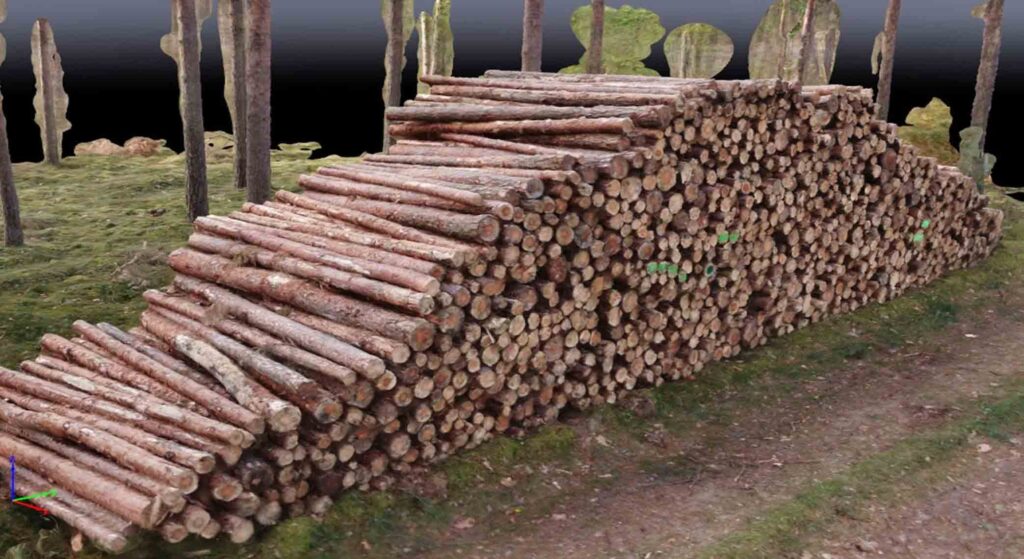FIT student Stefan Reder was contributing to research into use of a personal laser scanner to estimate the log’s volume and its comparison with traditional methods. The research was led by with Felipe de Miguel Diez. The aim of this study was the development of a methodical processing line for estimating the log’s volume from scanning logs using a long-range high-speed personal laser scanner (PLS) GeoSLAM ZEB HORIZON and simultaneous localization and mapping (SLAM) technology in an open-source software framework of Cloud Compare.
Additionally, the accuracy and precision of using PLS and the suggested method when measuring roundwood volume was examined compared to measurements made using a xylometer and estimations obtained from applying the formulae of Huber, Smalian and Newton. For this purpose, several parameters were measured in 50 logs of Norway spruce with an average length of 2.53 m and a mean diameter of 19.97 cm. Afterwards, the volume of these 50 logs was measured with a xylometer. The results of these measurements served as reference values. The same 50 logs were subsequently scanned with the PLS. The scans were converted into point clouds and were analyzed in Cloud Compare to estimate the volume of the scanned logs. Next, the root mean square error (RMSE) and the mean bias error (MBE) as well as their relative values were calculated for the volumes determined in Cloud Compare and estimated with the above mentioned formulae. The calculated RMSE (and relative RMSE) determined a deviation of the logs’ volumes estimated in Cloud Compare from the xylometric volumes of 2.88 dm³ (3.54%) whereas the deviations of the log’s volumes calculated applying the formulae of Huber, Smalian and Newton from the xylometric volumes were respectively 9.63 dm³ (11.83%), 10.33 dm³ (12.69%) and 4.69 dm³ (5.76%). The calculated MBE (and relative MBE) showed that the estimated volumes in Cloud Compare and those using the formulae were overestimated, with the lowest overestimation of 0.10 dm³ (0.12%) in Cloud Compare and the highest, 5.50 dm³ (6.75%), using the Smalian formula. Therefore, it can be stated that results of suggested methodical processing line came closest to the logs’ volumes obtained with the xylometer, i.e., they were more accurate and precise compared to the conventionally formulae for log’s volume estimation. The implementation of this method has the potential filling a gap towards a wall-to-wall complete digitization of the roundwood commercialization and ensure transparency and acceptance between the stake-holders involved in the wood supply chain.
The full research can be downloaded from research gate.
